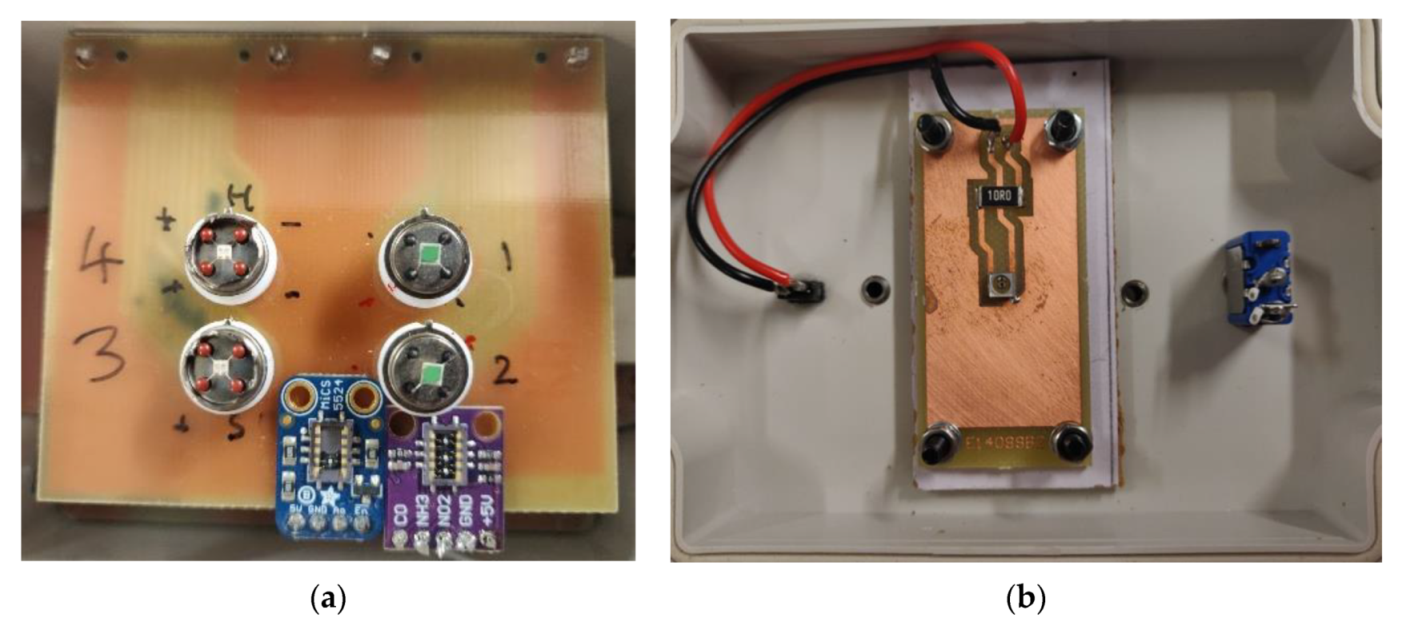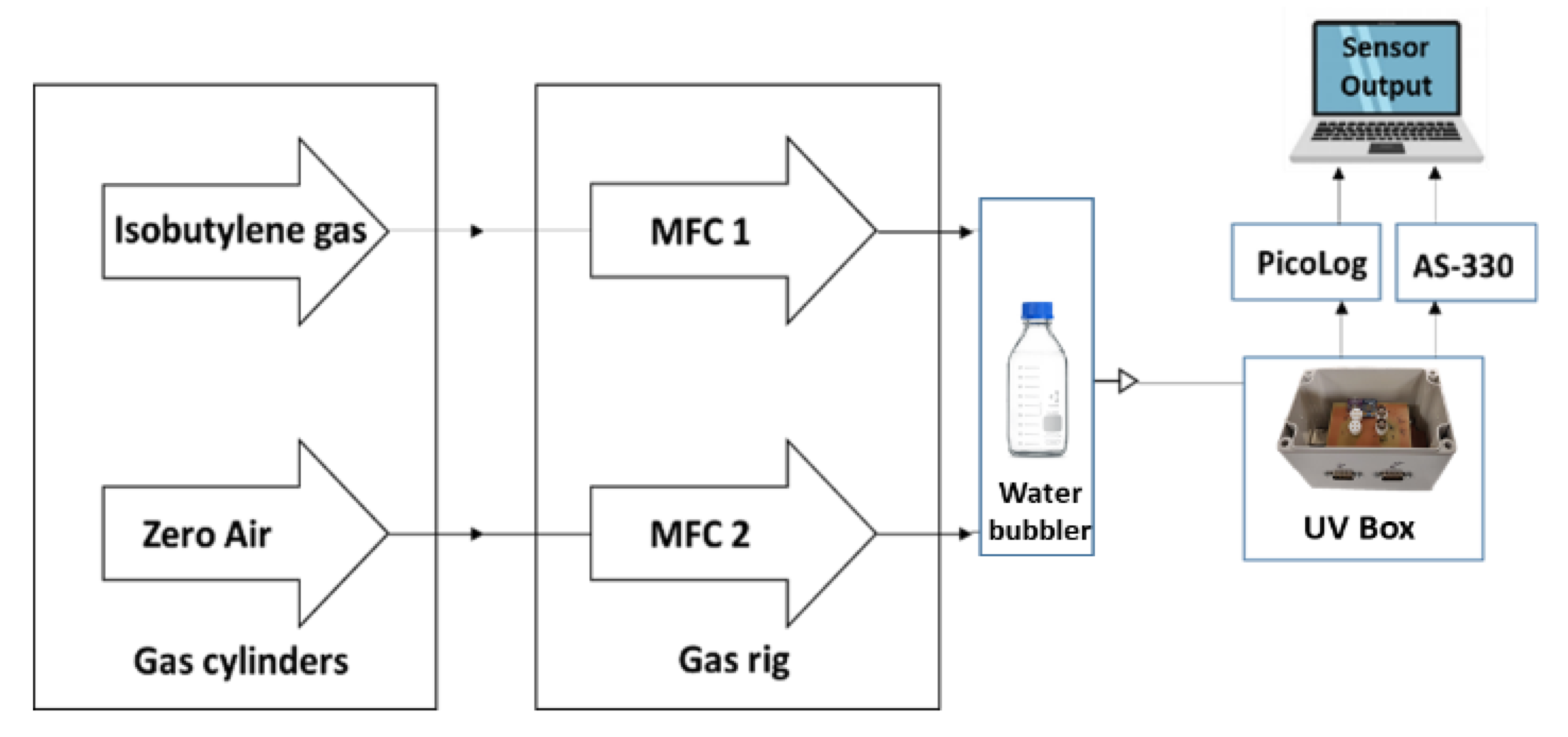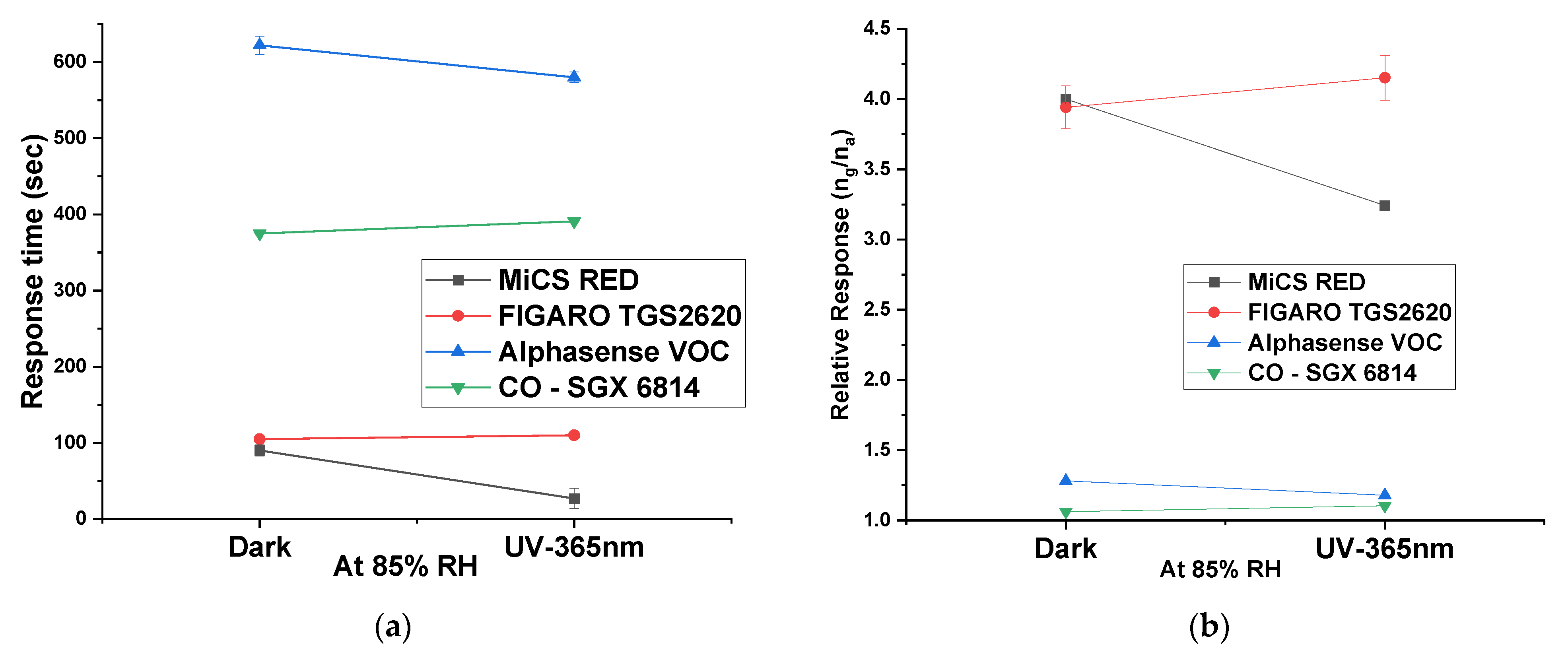Humidity Dependence of Commercial Thick and Thin-Film MOX Gas Sensors under UV Illumination †
Abstract
:1. Introduction
2. Experimental Section
2.1. UV Box
2.2. Gas Testing
3. Results and Discussion
4. Conclusions
Author Contributions
Funding
Institutional Review Board Statement
Informed Consent Statement
Acknowledgments
Conflicts of Interest
References
- Taguchi, N. Gas Detecting Device. U.S. Patent US3631436A, 28 December 1971. [Google Scholar]
- Yamazoe, N.; Sakai, G.; Shimanoe, K. Oxide semiconductor gas sensors. Catal. Surv. Asia 2003, 7, 63–75. [Google Scholar] [CrossRef]
- Espid, E.; Taghipour, F. UV-LED Photo-activated Chemical Gas Sensors: A Review. Crit. Rev. Solid State Mater. Sci. 2017, 42, 416–432. [Google Scholar] [CrossRef]
- Wang, C.; Yin, L.; Zhang, L.; Xiang, D.; Gao, R. Metal oxide gas sensors: Sensitivity and influencing factors. Sensors 2010, 10, 2088–2106. [Google Scholar] [CrossRef] [Green Version]
- Song, K.; Mohseni, M.; Taghipour, F. Application of ultraviolet light-emitting diodes (UV-LEDs) for water disinfection: A review. Water Res. 2016, 94, 341–349. [Google Scholar] [CrossRef] [PubMed]
- Alphasense. Technical Specification p-Type Metal Oxide Sensor. 2019. Volume 44, p. 4. Available online: https://www.alphasense.com/wp-content/uploads/2017/04/MMO-VOC.pdf (accessed on 31 October 2021).
- Fígaro USA Inc. TGS 2620 for the Detection of Solvent Vapors; Product Information; Fígaro USA Inc.: Arlington Heights, IL, USA, 2014. [Google Scholar]
- 1143 rev 8rtech SGX sensoMiCS-6814 Data Sheet. MiCS-6814 Data Sheet, 1143 rev 8. 2017. pp. 1–5. Available online: https://www.mouser.co.uk/ProductDetail/Amphenol-SGX-Sensortech/MICS-6814?qs=%2Fha2pyFadughAH8P0hFJIw2j1RVsNu9t%2FoHer11PQZWSpC3V0YvLzQ%3D%3D (accessed on 31 October 2021).





| Sensor | Response Time at Dark Condition | Response Time at UV-365 nm |
|---|---|---|
| MiCS-RED | 90 s | 20 s |
| Alphasense VOC Sensor | 622 s | 580 s |
Publisher’s Note: MDPI stays neutral with regard to jurisdictional claims in published maps and institutional affiliations. |
© 2021 by the authors. Licensee MDPI, Basel, Switzerland. This article is an open access article distributed under the terms and conditions of the Creative Commons Attribution (CC BY) license (https://creativecommons.org/licenses/by/4.0/).
Share and Cite
Ayyala, S.K.; Covington, J.A. Humidity Dependence of Commercial Thick and Thin-Film MOX Gas Sensors under UV Illumination. Eng. Proc. 2021, 10, 10. https://doi.org/10.3390/ecsa-8-11246
Ayyala SK, Covington JA. Humidity Dependence of Commercial Thick and Thin-Film MOX Gas Sensors under UV Illumination. Engineering Proceedings. 2021; 10(1):10. https://doi.org/10.3390/ecsa-8-11246
Chicago/Turabian StyleAyyala, Sai Kiran, and James A. Covington. 2021. "Humidity Dependence of Commercial Thick and Thin-Film MOX Gas Sensors under UV Illumination" Engineering Proceedings 10, no. 1: 10. https://doi.org/10.3390/ecsa-8-11246
APA StyleAyyala, S. K., & Covington, J. A. (2021). Humidity Dependence of Commercial Thick and Thin-Film MOX Gas Sensors under UV Illumination. Engineering Proceedings, 10(1), 10. https://doi.org/10.3390/ecsa-8-11246







